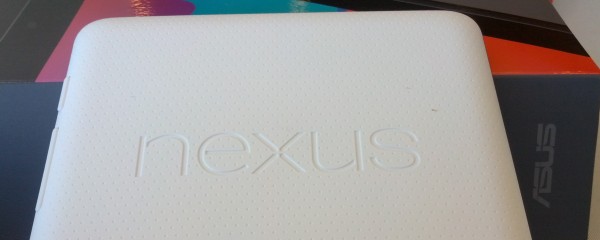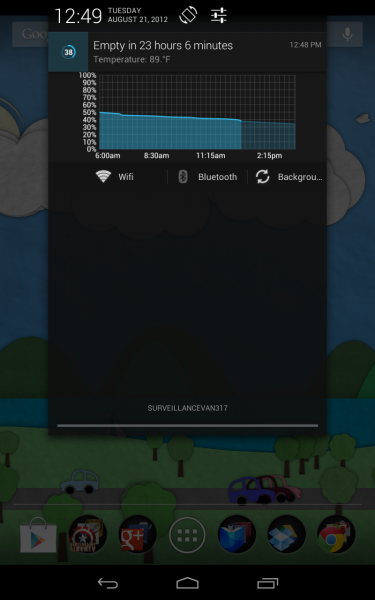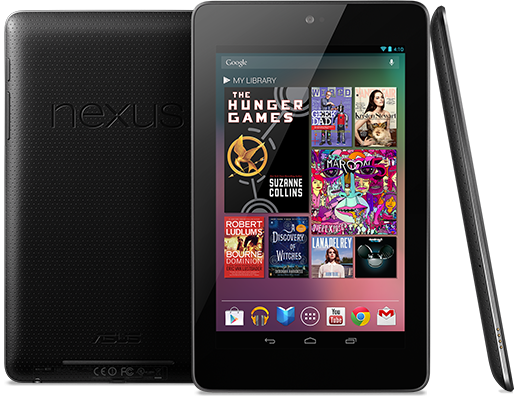Nexus 7 is confusing

I must preface by clearly stating that I absolutely love my Nexus 7. I recommended it to dozens of people, and fully plan to hand out a few as birthday gifts before the year is over. The tablet is incredibly solid, and worth every penny of the $200 selling price. As far as hardware is concerned, Nexus 7 is remarkable in nearly every aspect.
That said, Google’s approach to Android 4.1 on this device leaves me with a sense of practiced uncertainty and no clue where the tablet fits into the Android ecosystem.
Three's a Crowd
Let's look at Android 4.1 as it exists across Google’s three reference devices. When just Galaxy Nexus and Motorola XOOM, the user interface offered two wildly different navigational instances. You had the drawer interface on devices smaller than 5 inches and the corner interface on devices that are larger. Nexus 7 brings a third design instance with entirely different rules, but with an interface that leans more towards the drawer style.
It’s not for nothing either; I much prefer the drawer style on the Nexus 7 than I do the larger interface. I think most people would prefer this design if given the choice, even if it often makes the tablet feel like a large phone.
So we’ve identified a mostly phone-like interface on Nexus 7, and it’s enjoyable. The apps that Google releases for the operating system, however, didn’t get the memo. In fact, they almost all use the larger interface. Compare Chrome on Nexus 7 to Galaxy Nexus. On the phone version of the app, you get some really terrific usability features, like the ability to tilt your phone up or down to scroll across the tabs you have open. You can’t do this on Nexus 7, because Chrome lays out like the tablet version of the app. Tabs line up like you would see them on your computer, but they stack up on top of each other when three or more are open in landscape mode.
This confusing experience is reflected in other app categories as well. You don’t see these problems with games, rather with information delivery apps. For example, Twitter apps for the Nexus 7 are in a state of disarray. It feels like no one's quite sure which design guide to follow. As such, most of the apps wind up being laid out as though they're on a massive phone, while the others cram their implementation of the larger interface onto the 7-inch screen. On my phone, there are many decent Twitter apps, but on Nexus 7 I find almost all of them are tedious and awkward, comparatively.
 No Middle Ground
No Middle Ground
In time, Google hopes that this is an issue that will simply go away. As more users move to the latest versions of Android, more developers will move to the new design guidelines that Google promotes. Will that really solve these inconsistencies? Their “fragments” UI guidelines allow developers to build apps that will work within all three reference devices, but as Google has demonstrated that means your Nexus 7 apps will work as though you are on a small tablet, not a large phone. It doesn’t feel like there’s really a middle ground, even though the OS itself is clearly optimized for the different screen size.
It’s easy to look at these inconsistencies and think nothing of them. For the most part, in this one particular device, it’s a non-issue. The average citizen probably won’t even know that something is off. As someone soaked in the stuff, someone who looks at these devices all day, every day, it’s clear to me that there’s a small design curiosity that will only get larger with time.
Nexus 7 is off to a strong start, with the 16GB selling so well it's perpetually delayed. It's entirely possible that the tablet is the most successful Nexus device to date (IDC and other analyst firms aren't expected to release shipments until after third quarter ends). Other manufacturers likely will borrow from the Nexus 7 recipe -- as they should for devices Google releases as reference designs. More 7-inch tablets will become available, and each of the manufacturers will have to choose between copying Google, or going their own way (as Samsung so clearly does with Galaxy Tab).

Considering how many other manufacturers are already making their own variants of the Android UI, I don’t think it will go Google’s way for very long. When the time comes to pull bits and pieces from Nexus 7 and apply the recipe to other devices, manufacturers will take the user interface into heavy consideration.
Maybe the answer is to allow users to choose an interface for their apps. Maybe users should be able to flip a switch and turn the Nexus 7 UI into the larger format, like so many Android hackers attempt right now. There’s not really a clear path, since there really are two options here. If given the choice, most users will stick with whatever default they are given anyway. Google has clearly made two different interfaces though, and Nexus 7 sits awkwardly in-between them, not really belonging in either.
